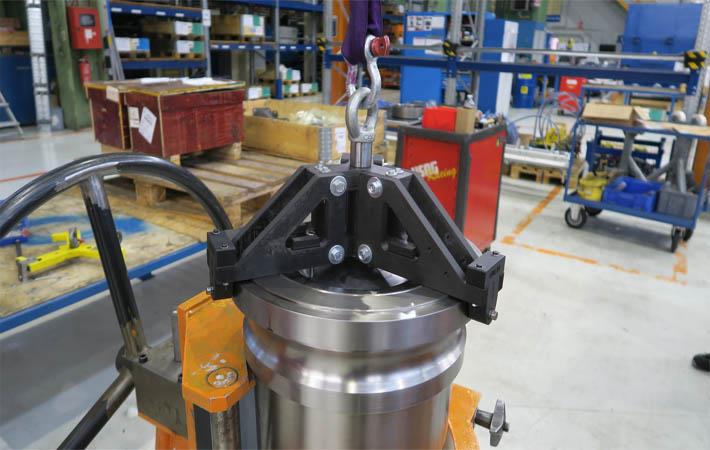Wärtsilä, a leading technology group servicing the marine and energy markets, has developed a 3D printed composite lifting tool for its engines using Markforged additive manufacturing technology. Use of this technology eliminates shipment time and reduces warehousing requirements. The tool is also significantly lighter and considerably more compact.
The tool has been designed, produced, and tested by Wärtsilä in its premises using the company’s Additive Manufacturing Network. The testing procedure was carried out in collaboration with international certification agency Bureau Veritas, which has granted the tool Type Approval certification.Wärtsilä, a leading technology group servicing the marine and energy markets, has developed a 3D printed composite lifting tool for its engines using Markforged additive manufacturing technology. Use of this technology eliminates shipment time and reduces warehousing requirements. The tool is also significantly lighter and considerably more compact.#
In order to service engines found in the field or in the factories, Wärtsilä’s teams often rely on custom lifting tools to move immensely heavy engine parts such as pistons. Traditionally, those tools are forged out of solid steel and are expensive, time intensive to manufacture, and too heavy to easily use or transport. The team turned to Markforged 3D printers to find a solution.
This innovation means the lifting tool can be manufactured using additive manufacturing, thereby eliminating shipment time and reducing warehousing requirements. It offers a lower cost than conventional one-off tools made for production purposes, and is significantly lighter and considerably more compact, making it easy to transport to commercial ships to service engines. By enabling the easy creation of specific tools for pilot projects, the new tool will speed up the introduction of new products and reduce their time-to-market.
The technology utilises reinforced polymers for structural applications, such as lifting the piston and cylinder of a Wärtsilä 26 engine with a working load of 240 kilogram. By combining the exceptional mechanical properties and lightness of Markforged’s carbon fibre reinforced filament, together with the innovative 3D printing design concept developed by Wärtsilä, the lifting tool is able to handle more than five times its working load.
Inspired by their previous successes with Markforged carbon fibre 3D printers, engineers at Wärtsilä redesigned the lifting tool for its Markforged Industrial Series X7 3D printer. The resulting new continuous carbon fibre part was 75 per cent lighter than the original steel version.
In the eight months since Wärtsilä made the switch to composite printed tools, it has saved an estimated €100,000, and, in the case of lifting tool, it has reduced production time from six weeks for the conventionally produced tool to a few days using the X7 3D printer.
“Additive manufacturing opens up new possibilities for both our manufacturing and servicing operations with tool creation that is faster, less costly, and safe. It also reduces the need for stock and allows just-in-time production processes,” says Giuseppe Saragò, director, Manufacturing Excellence at Wärtsilä. “This is an outstanding example of Wärtsilä’s smart approach to manufacturing technologies, and shows the potential that new technology can have to optimise our operations. We are always evaluating other 3D printed applications, and have already seen plenty of benefits across our production floor.”
Fibre2Fashion News Desk (SV)


